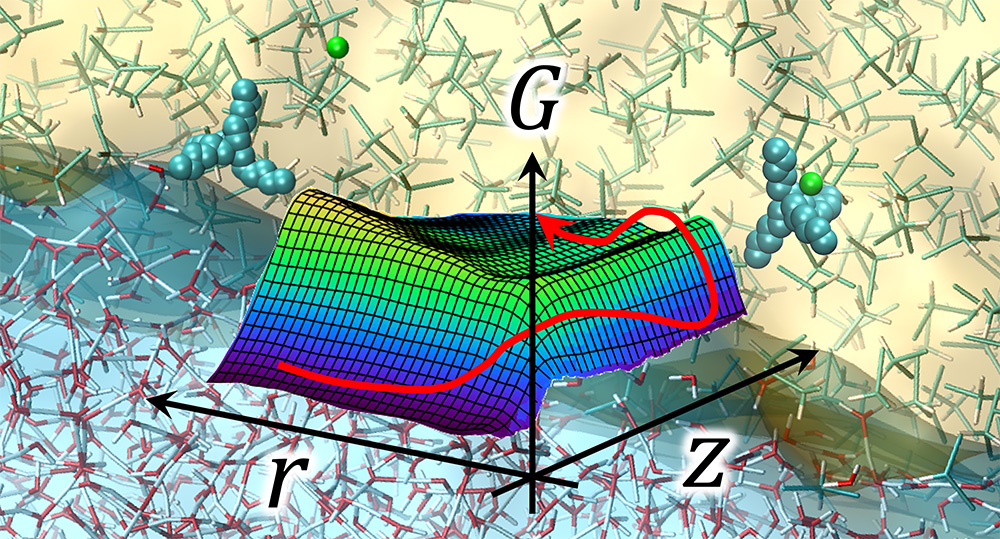Strongly hydrophilic ions are hard to be transported from water to oil phase, while some ligand or ionophore can dramatically accelerate the ion transport even by a trace amount. Such catalytic effect was elucidated by the present MD calculation of multi-dimensional free energy surface which can describe the ion transport and complex formation simultaneously. The free energy landscape delineates the “shuttling” of ion passage over the nm range of the interface with the help of the ligand. The free energy surface also revealed the criteria whether the catalytic effect is induced or not. The present work extends the conventional concept of facilitated ion transfer to the microscopic scale.

Copyright 2020 American Chemical Society.
